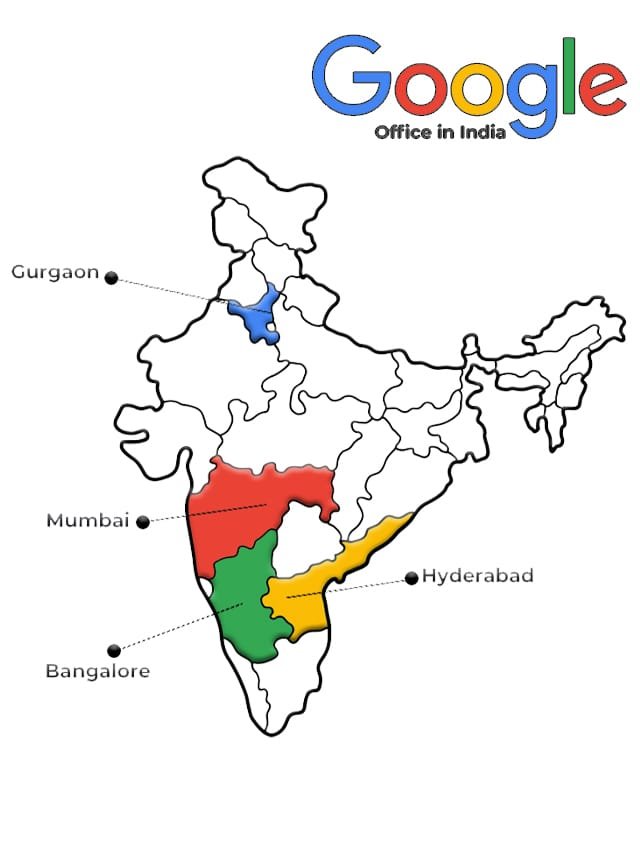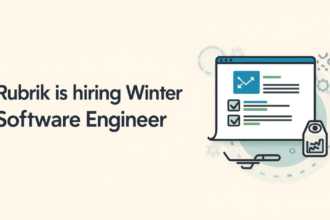Are you a 2025 engineering graduate dreaming of cracking a software developer job at Virtusa through the Virtusa Neural Hackathon 2025? Ever wondered what makes candidates stand out as a Regular Coder or Power Coder? You’re not alone!
- What is Virtusa Neural Hackathon 2025?
- Eligibility Criteria for Virtusa Neural Hackathon 2025
- Virtusa Neural Hackathon 2025 Job Roles & Salary
- Virtusa Neural Hackathon 2025 Recruitment Process
- What is Virtusa SpeechX Test?
- Virtusa Neural Hackathon 2025 Syllabus
- How to Prepare for Virtusa Neural Hackathon 2025
- Virtusa Neural Hackathon 2025 Software Developer Timeline
- Previous Year Pattern Insights
- Virtusa Neural Hackathon 2025 Interview Q&A (For Software Developer)
This article is your ultimate guide to prepare for the Virtusa Neural Hackathon 2025 Software Developer — from eligibility, syllabus, and process, to salary insights, preparation tips, and FAQs. Let’s dive in!
What is Virtusa Neural Hackathon 2025?
Virtusa Neural Hackathon 2025 is a national-level hiring challenge conducted by Virtusa to recruit freshers for Software Developer and Software Tester roles. The challenge tests your coding, problem-solving, communication, and analytical skills.
It’s designed to identify top-performing students who can join Virtusa’s tech teams directly from college.
👉 Apply for Virtusa Neural Hackathon 2025 here (Registration Closed)
Eligibility Criteria for Virtusa Neural Hackathon 2025
Before you start preparing, make sure you’re eligible. Here’s what Virtusa looks for:
| Criteria | Details |
|---|---|
| Education | BE / BTech (IT, CSE, ECE, AI/ML, Data Science, Cyber Security, or related) |
| Academic Performance | Minimum 65% aggregate across 10th, 12th, and graduation |
| Eligible Batch | Final Year or Recent Graduates (Batch of 2025) |
| Job Roles | Software Developer / Software Tester |
So, if you’re a tech enthusiast who meets these criteria, this is your gateway to Virtusa.
Virtusa Neural Hackathon 2025 Job Roles & Salary
One of the most exciting aspects of this hackathon is its performance-based packages.
| Profile | Coding Level | Job Role | Salary (LPA) |
|---|---|---|---|
| Regular Coder | Basic to Intermediate | Software Developer / Tester | ₹5 LPA |
| Power Coder | Intermediate to Advanced | Software Developer / Tester | ₹6.5 LPA |
💡 Note: Your designation will be either Software Developer or Tester, but your package depends on your coding performance.
Virtusa Neural Hackathon 2025 Recruitment Process
The recruitment process for Virtusa Neural Hackathon 2025 is divided into four key rounds.
| Stage | Details |
|---|---|
| 1. Technical Assessment + SpeechX | Tests basic technical concepts and includes a SpeechX communication test. |
| 2. Coding Assessment | Coding problems on DSA, logical reasoning, and problem-solving. |
| 3. Technical & Communication Interview | Deep dive into programming, projects, and technical concepts like OOPs, DBMS, OS. |
| 4. HR Interview | Discussion on salary, location preferences, and company fit. |
What is Virtusa SpeechX Test?
SpeechX is an AI-based English proficiency test used by Virtusa to evaluate a candidate’s speaking, listening, and communication skills.
You’ll need to speak clearly, confidently, and naturally while answering general English questions. It plays a key role in determining your overall selection.
Virtusa Neural Hackathon 2025 Syllabus
Here’s the detailed syllabus for both Software Developer and Software Tester roles.

| Area | Software Developer | Software Tester |
|---|---|---|
| Aptitude & Communication | Analytical Reasoning, Numerical Ability, Grammar, Vocabulary, Reading Comprehension, Writing Skills, Power Coding | Analytical Reasoning, Numerical Ability, Grammar, Vocabulary, Reading Comprehension, Writing Skills, Power Coding |
| Technical Skills | Data Structures, OOPs Concepts, OS (Basics), MySQL (Basics), SQL Joins, Subqueries, Pseudocode, Recursion, Core Java | Python, OOPs, OS (Basics), MySQL, SQL Joins, Subqueries, Selenium Automation, Manual Testing (ISTQB Basics), Core Java |
How to Prepare for Virtusa Neural Hackathon 2025
Here’s how you can boost your chances of becoming a Virtusa Power Coder or Software Developer.
1. Strengthen Your Core CS Fundamentals
Revise topics such as:
- Data Structures: Arrays, Linked Lists, Trees, Stacks, Queues, Graphs.
- OOPs Concepts: Inheritance, Encapsulation, Polymorphism, Abstraction.
- Operating Systems: Process management, memory management, scheduling.
- SQL/MySQL: Joins, Subqueries, and database basics.
2. Practice Coding Regularly
Use platforms like LeetCode, HackerRank, and CodeStudio to solve:
- Medium-level DSA problems
- Pattern-based coding questions
- Recursion and pseudocode questions
Aim to solve at least 50–70 questions before the test.
3. Build Communication Confidence
Since SpeechX evaluates your speaking, record yourself answering common HR questions and practice reading comprehension to improve fluency and pronunciation.
4. Learn Testing Tools (for Testers)
If applying for a Software Tester role, revise basics of:
- Manual Testing (STLC, SDLC, Bug life cycle)
- Automation Testing (Selenium basics using Python)
- ISTQB Foundation concepts
5. Mock Interviews and Group Discussions
Participate in mock interviews and technical discussions. It improves your confidence and helps you handle Virtusa’s communication rounds effectively.
Virtusa Neural Hackathon 2025 Software Developer Timeline
| Event | Date |
|---|---|
| Applications Open | August 2025 |
| Last Date to Apply | 3rd October 2025 |
| Online Assessment | October 2025 (Tentative) |
| Interviews & Final Results | November 2025 |
Previous Year Pattern Insights
Candidates from past years reported the following pattern:
- Coding Round: 2–3 DSA problems (arrays, strings, recursion).
- Technical Interview: Questions on OOPs, SQL queries, and project explanation.
- SpeechX: Short English-speaking test to assess fluency and pronunciation.
Regular Coders typically solved 1–2 medium problems correctly, while Power Coders solved all with optimal code.
Virtusa Neural Hackathon 2025 Interview Q&A (For Software Developer)
1. What are the four main pillars of OOPs?
The four pillars are:
- Encapsulation – wrapping data and methods together in one unit.
- Abstraction – hiding internal details and showing only functionality.
- Inheritance – acquiring properties from another class.
- Polymorphism – one method behaves differently based on the object type.
2. What is the difference between == and .equals() in Java?
==checks reference equality (whether both references point to the same object)..equals()checks value equality (whether two objects have the same data).
String a = new String("Hello");
String b = new String("Hello");
System.out.println(a == b); // false
System.out.println(a.equals(b)); // true
3. Why is the main() method static in Java?
Because the JVM needs to call the main() method without creating an object of the class.
A static method can be called directly using the class name.
4. What does the this keyword do?
this refers to the current object of the class.
It’s used to access instance variables, methods, or constructors within the same class.
class Student {
int id;
Student(int id){ this.id = id; }
}
5. Difference between final, finally, and finalize()?
- final – for constants or to prevent inheritance/overriding.
- finally – block that always executes after try/catch.
- finalize() – method called by Garbage Collector before object destruction.
6. Difference between Abstract Class and Interface?
| Feature | Abstract Class | Interface |
|---|---|---|
| State | Can have variables | Cannot have instance variables |
| Methods | Can have concrete + abstract methods | Only abstract (till Java 7), default/static from Java 8 |
| Inheritance | Single inheritance | Multiple inheritance allowed |
7. Can we override private or static methods?
No.
- Private methods are not visible to subclasses.
- Static methods are hidden, not overridden.
8. Difference between Method Overloading and Overriding?
- Overloading: Same method name, different parameter list (compile-time polymorphism).
- Overriding: Same method name and parameters in subclass (runtime polymorphism).
9. What is Encapsulation?
Encapsulation means binding data and methods into one unit and restricting direct access using private modifiers and getters/setters.
10. What is the purpose of a Constructor in Java?
Constructors are used to initialize objects when created.
You can call another constructor using this() keyword.
Memory Management & Garbage Collection
11. Where are objects stored in Java?
Objects are stored in the heap memory, and their references are stored on the stack.
12. What is the String Constant Pool?
It’s a special memory area where string literals are stored for reusability and efficiency.
13. Difference between String, StringBuilder, and StringBuffer?
| Class | Mutable | Thread-Safe | Use Case |
|---|---|---|---|
| String | No | Yes | Immutable text |
| StringBuilder | Yes | No | Faster for single-thread use |
| StringBuffer | Yes | Yes | Multi-thread safe operations |
14. What is Garbage Collection in Java?
It’s an automatic process that reclaims memory used by objects no longer referenced in code.
15. What are the different types of Java references?
- Strong – normal reference (object not eligible for GC).
- Weak – eligible for GC if no strong refs exist.
- Soft – GC if memory is low.
- Phantom – used for cleanup operations.
Collections & Generics
16. Difference between HashMap, Hashtable, and ConcurrentHashMap?
| Map Type | Synchronized | Null Keys | Thread-Safe |
|---|---|---|---|
| HashMap | No | 1 null key allowed | No |
| Hashtable | Yes | No | Yes |
| ConcurrentHashMap | Partial | No | Yes |
17. How does HashMap work internally
It stores data in buckets using a hash function.
When two keys map to the same index (collision), it uses a LinkedList or Tree to store entries.
18. Explain equals() and hashCode() contract.
If two objects are equal using equals(), they must have the same hashCode().
But two objects with the same hashCode() may not be equal.
19. Difference between Comparable and Comparator.
- Comparable: Class implements
compareTo()method. - Comparator: External class implements
compare()to define sorting logic.
20. What’s the difference between List, Set, and Map?
| Interface | Duplicate Allowed | Ordered | Example |
|---|---|---|---|
| List | Yes | Yes | ArrayList |
| Set | No | No | HashSet |
| Map | Key-Value Pairs | Depends | HashMap |
Concurrency & Multithreading
21. Difference between Thread and Runnable?
- Thread is a class; you extend it.
- Runnable is an interface; you implement it.
Using Runnable allows flexibility to extend other classes.
22. What is the purpose of synchronized keyword?
It ensures mutual exclusion, allowing only one thread to execute a block of code at a time.
23. What is a Deadlock?
When two or more threads wait indefinitely for each other’s locks.
Avoid it by consistent lock ordering and using tryLock().
24. Difference between volatile and Atomic variables.
- volatile: Ensures visibility of changes across threads.
- Atomic: Provides atomic (indivisible) operations without locking.
25. What is a Thread Pool?
It’s a collection of reusable threads managed by ExecutorService to reduce overhead of creating new threads.
Exception Handling & I/O
26. Difference between Checked and Unchecked exceptions.
- Checked: Must be declared or handled (e.g., IOException).
- Unchecked: Runtime exceptions (e.g., NullPointerException).
27. Difference between throw and throws.
- throw: Used to actually throw an exception.
- throws: Declares that a method may throw exceptions.
28. What is try-with-resources?
Introduced in Java 7 — automatically closes resources like files or connections.
29. What is Serialization?
Serialization converts an object into a byte stream to save or transfer it.
Class must implement Serializable interface.
Java 8 & Modern Features
30. What is a Lambda Expression?
A short way to write anonymous functions.
(x, y) -> x + y
31. What is a Functional Interface?
An interface with exactly one abstract method, e.g. Runnable, Comparator.
32. What is Stream API
A powerful feature for processing data in functional style using operations like map(), filter(), and reduce().
33. Explain map(), filter(), and collect().
- map(): Transform elements.
- filter(): Select based on condition.
- collect(): Convert stream to list or set.
34. What is Optional in Java?
A container object that may or may not hold a value — used to avoid NullPointerException.
Frameworks / Spring / Microservices
35. What is Dependency Injection (DI)?
DI allows dependencies to be injected rather than created inside the class — enabling loose coupling.
36. Difference between @Controller and @RestController.
- @Controller: Returns view (HTML).
- @RestController: Returns JSON or XML response (used in APIs).
37. What is @Transactional?
It marks a method to be executed within a database transaction — commits on success, rollbacks on failure.
38. Difference between PUT and PATCH.
- PUT: Replaces the entire resource.
- PATCH: Updates only specific fields.
39. What is Lazy vs Eager Loading in JPA?
- Lazy: Data is fetched only when accessed.
- Eager: Data is fetched immediately when the entity is loaded.
Design Patterns & Problem Solving
40. What is a Singleton Class?
A class that allows only one instance throughout the application.
class Singleton {
private static Singleton instance;
private Singleton() {}
public static Singleton getInstance() {
if (instance == null) instance = new Singleton();
return instance;
}
}
41. Name a few popular Design Patterns.
Singleton, Factory, Strategy, Observer, Adapter, and Decorator.
42. Write a code to check if a string is a palindrome.
String str = "madam";
String rev = new StringBuilder(str).reverse().toString();
System.out.println(str.equals(rev) ? "Palindrome" : "Not Palindrome");
43. How to reverse a linked list?
Using three pointers – prev, current, and next. Iterate and change links until the list is reversed.
44. What is the time complexity of binary search?
O(log n), since it divides the array in half each time.
45. How do you detect duplicates in an array?
Use a HashSet to track seen elements. If an element already exists, it’s a duplicate.
✅ Bonus Tip:
For Virtusa’s Power Coder round, focus on DSA-based coding, Java 8 Streams, and OOPs principles.
FAQs on Virtusa Neural Hackathon 2025
Q1. What is Virtusa Neural Hackathon 2025?
It’s a hiring challenge by Virtusa for Software Developer and Tester roles. It assesses coding, problem-solving, and communication abilities.
Q2. Who can apply?
Final-year engineering students or recent graduates (2025 batch) from IT, CSE, ECE, and related branches with 65% aggregate marks.
Q3. How many rounds are there?
Four: Aptitude & Communication, Coding Round, Technical Interview, and HR Interview.
Q4. What salaries are offered?
Regular Coders get ₹5 LPA, and Power Coders get ₹6.5 LPA.
Q5. How to prepare effectively?
Focus on DSA, SQL, OOPs, and English communication. Practice mock coding tests and revise CS fundamentals.
Q6. Where can I learn more about Virtusa?
Visit the official Virtusa Careers Page for company insights and openings.
If you’re serious about launching your tech career at Virtusa, the Virtusa Neural Hackathon 2025 is your golden ticket. Prepare smartly, focus on coding and communication, and aim for that Power Coder badge!
We hope this guide helped you understand everything about the Virtusa Neural Hackathon 2025 Software Developer Interview Prep.
Thank you for reading — and don’t forget to join Course Bhai on social media, enable push notifications, and subscribe to our newsletter for instant updates on the latest jobs, internships, and courses.








